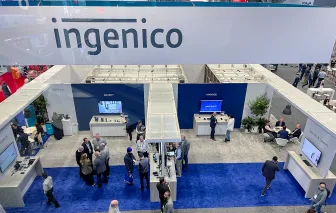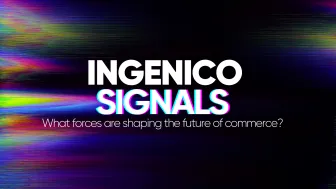¿Es la tecnología de pagos la clave para desbloquear oportunidades de pequeños negocios para los ISVs?

Micro, Small, and Medium Enterprises (MSMEs) are a fascinating business segment which has experienced a dramatic change in technology use to keep up with consumer behaviours.
We spoke to Sebastien Lefranc, head of Ingenico's Start-Up Engagement Program to consider why ISVs and B2B tech platforms are leveraging the latest payment technology to support smaller organisations through some examples from the Asia and Pacific region.
From an Asia-Pacific perspective, how would you describe the impact of the COVID-19 pandemic on the MSMEs landscape?
Micro, Small, and Medium Enterprises are a large contributor to any country’s economy and, although often portrayed as one monolithic block, not every MSME works the same way. Consequently, different factors have resulted in variable impacts during the pandemic. For instance, the age of the business, or that of the business owner, plays a role in how MSMEs have performed. Painting an accurate picture of their landscape is therefore a challenging exercise. Not only must one account for the impact of the Covid-19 pandemic and the varying levels of government support, but also the underlying structure of local economies.
However, where we can all agree, is that of the estimated 145 million MSMEs in Asia-Pacific prior to the pandemic, while many struggled to survive the subsequent financial turmoil, a significant number of employed or furloughed workers joined the ranks of entrepreneurship, whether willingly or not.
What do you think has been the catalyst for MSME’s transformation – or resiliency – amidst these changing economic conditions?
The catalyst has been an unprecedented wave of technology adoption. New cloud-based services from B2B technology platforms have emerged, providing solutions for supply chain management, inventory tracking, sales analytics, and CRM services. Players like StoreKing, Growsari, and Dropee have tapped into the commercial potential of MSMEs and now sit at the heart of their digital transformation and day-to-day business operations.
In a nutshell, in-store commerce is not going away anytime soon. The ISVs and B2B technology platforms who helped small merchants to introduce online shopping, now need to find a way to support them as they refocus on their physical locations.
Some have selected a mobile-centric strategy, leveraging the high penetration in Asia-Pacific countries. But while this creates millions of potential merchant touchpoints overnight, not every employee is keen to use their personal phone to run a B2B service.
nstead, a new solution for micro merchants has emerged through the application of Android-powered payment terminals. By turning the merchant’s point of sale terminal into a store management solution, from the front end (making sales, taking payments, and enabling loyalty solutions) to the back end (managing inventory and sales performance), MSMEs can drastically improve their business efficiency.
Payment technology is therefore key to offering a seamless in-store experience for MSMEs. In particular, payments data adds crucial intelligence to the B2B tech platforms by enabling reconciliation between inventory and sales, streamlining the ordering flows to suppliers whilst building a record of financial transactions. By leveraging this information, B2B tech platforms can ultimately give MSMEs access to credit with improved risk management.

Beyond B2B tech platforms, are there any other players changing the MSMEs landscape, and if so, what’s in it for them?
Interestingly, several retail conglomerates and fast-moving consumer goods (FMCG) companies have come up with similar thinking to the B2B tech platforms. These conglomerates are currently looking to equip MSMEs with end-to-end store management capabilities. In return, they get access to an extended distribution network, one that covers the last mile to be closer to consumers in their own neighbourhoods, at a fraction of what it would cost retailers and FMCG companies to set up their own stores.
In countries like India and Indonesia, where the number of MSMEs is more than 60 million in each country, this is a huge opportunity to expand in even the most remote or underserved areas.
What role does Ingenico have to play between all these new and incumbent service providers?
In the wake of the transformation that economies have undergone during the last 2 years, digital-first ecosystems are now the cornerstone of MSME businesses in the Asia-Pacific region and will provide the lion’s share of growth for the foreseeable future. Retail payments will be key to unlocking more value for B2B tech platforms and retail conglomerates and Ingenico can bridge the gap between the digital and payment elements of this equation.
To support this, we recently launched StartupIN, our newly created engagement program. It aims to onboard early-stage start-ups into our ecosystem to help them develop in-store or omnichannel capabilities quicker and scale more rapidly by gaining exposure to Ingenico’s customer and partner networks.
Ultimately, the program will serve to build win-win-win collaborations between start-ups, our customers, and partners, and Ingenico.











